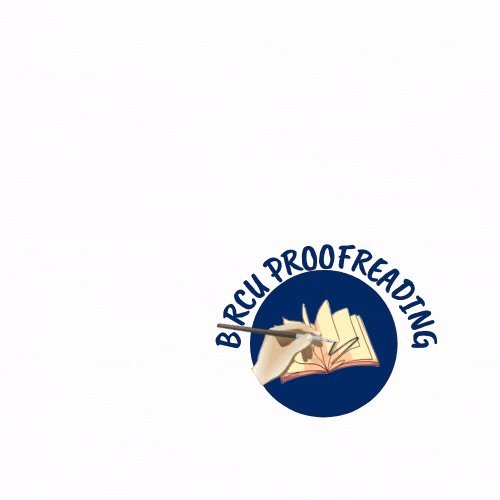Human Resource Management Strategy Prediction in Small Business Marketing after Pandemic
Abstract
Prediction of HR management strategy in small business marketing after the pandemic is the purpose of this study. We believe that every business, both small and large, is very concerned with human resources in marketing all business products. Therefore, we have obtained raw data from electronic searches in several scientific publications, especially HRM and post-pandemic small business marketing governance. We have carefully reviewed the data, involving an in-depth evaluation and coding system so that it is easy for us to answer the questions of this study. Our data publications target journals such as Sagepub, Academic works, Google Books, Taylor and France, and other data sources. We reviewed hundreds of papers to get around 50 journal publications that we have thoroughly reviewed. Based on the discussion of the results, the result is that the human resources department develops rules and processes that promote a fair work environment. Additionally, they settle disputes and listen to employee problems to instill a sense of belonging. All of these factors contribute to the efficient operation of the company and enable workers to perform their best job.
HR; marketing; small business; pandemic; publication review
Keywords
Full Text:
PDFReferences
Alshathry, S., Clarke, M., Goodman, S., 2017. The role of employer brand equity in employee attraction and retention: a unified framework. Int. J. Organ. Anal.
Anastasiou, S., 2012. Critical human resources management functions for efficient logistics and supply chain management, in: Proceedings of the 2nd International Conference on Supply Chains, Katerini, Greece.
Ansari, N.G., 2011. Employee Perception of HRM Practices: Impact on Commitment to the Organization. South Asian J. Manag. 18.
Antonioli, D., Mancinelli, S., Mazzanti, M., 2013. Is environmental innovation embedded within high-performance organisational changes? The role of human resource management and complementarity in green business strategies. Res. Policy 42, 975–988.
Armstrong, M., Taylor, S., 2020a. Armstrong’s handbook of human resource management practice.
Armstrong, M., Taylor, S., 2020b. Armstrong’s handbook of human resource management practice.
Baum, T., 2015. Human resources in tourism: Still waiting for change?–A 2015 reprise. Tour. Manag. 50, 204–212.
Berman, E.M., Bowman, J.S., West, J.P., Van Wart, M.R., 2021. Human resource management in public service: Paradoxes, processes, and problems. CQ Press.
Bondarouk, T., Brewster, C., 2016. Conceptualising the future of HRM and technology research. Int. J. Hum. Resour. Manag. 27, 2652–2671.
Bruns, H.-J., 2014. HR development in local government: how and why does HR strategy matter in organizational change and development? Bus. Res. 7, 1–49.
Bryson, J.M., 2018. Strategic planning for public and nonprofit organizations: A guide to strengthening and sustaining organizational achievement. John Wiley & Sons.
Burton, K., 2012. A study of motivation: How to get your employees moving. Management 3, 232–234.
Caldwell, C., Truong, D.X., Linh, P.T., Tuan, A., 2011. Strategic human resource management as ethical stewardship. J. Bus. Ethics 98, 171–182.
Carter, L., Sullivan, R.L., Goldsmith, M., Ulrich, D., Smallwood, N., 2013. The Change Champion’s Field Guide: Strategies and Tools for Leading Change in Your Organization. John Wiley & Sons.
Choudary, D.V., Ponnuru, M., 2015. The importance of soft-skills training for MBA students and managers. Abhinav Int. Mon. Refereed J. Res. In 4, 6–14.
Chowhan, J., Pries, F., Mann, S., 2017. Persistent innovation and the role of human resource management practices, work organization, and strategy. J. Manag. Organ. 23, 456–471.
Cohen, M.S., 2021. Monoclonal antibodies to disrupt progression of early covid-19 infection.
Dacin, M.T., Dacin, P.A., Tracey, P., 2011. Social entrepreneurship: A critique and future directions. Organ. Sci. 22, 1203–1213.
Dao, V., Langella, I., Carbo, J., 2011. From green to sustainability: Information Technology and an integrated sustainability framework. J. Strateg. Inf. Syst. 20, 63–79.
DeCenzo, D.A., Robbins, S.P., Verhulst, S.L., 2016. Fundamentals of human resource management. John Wiley & Sons.
Ehnert, I., 2014. Paradox as a lens for theorizing sustainable HRM, in: Sustainability and Human Resource Management. Springer, pp. 247–271.
Ewing, M., Men, L.R., O’Neil, J., 2019. Using social media to engage employees: Insights from internal communication managers. Int. J. Strateg. Commun. 13, 110–132.
Fragoulis, I., Phillips, N., 2011. Social skills for successful career development. Rev Eur Stud 3, 85.
Greer, C.R., Lusch, R.F., Hitt, M.A., 2017. A service perspective for human capital resources: A critical base for strategy implementation. Acad. Manag. Perspect. 31, 137–158.
Gruman, J.A., Saks, A.M., 2011. Performance management and employee engagement. Hum. Resour. Manag. Rev. 21, 123–136.
Hitt, M.A., Ireland, R.D., Hoskisson, R.E., 2016. Strategic management: Concepts and cases: Competitiveness and globalization. Cengage Learning.
Ibrahim, R., Rahimian, F.P., 2010. Comparison of CAD and manual sketching tools for teaching architectural design. Autom. Constr. 19, 978–987.
Jarkas, A.M., Bitar, C.G., 2012. Factors affecting construction labor productivity in Kuwait. J. Constr. Eng. Manag. 138, 811–820.
Lee, F.-H., Lee, T.-Z., Wu, W.-Y., 2010. The relationship between human resource management practices, business strategy and firm performance: evidence from steel industry in Taiwan. Int. J. Hum. Resour. Manag. 21, 1351–1372.
Lee-Ross, D., Pryce, J., 2010. Human resources and tourism: Skills, culture and industry. Channel View Publications.
Lengnick-Hall, C.A., Beck, T.E., Lengnick-Hall, M.L., 2011. Developing a capacity for organizational resilience through strategic human resource management. Hum. Resour. Manag. Rev. 21, 243–255.
Leroy, H., Segers, J., Van Dierendonck, D., Den Hartog, D., 2018. Managing people in organizations: Integrating the study of HRM and leadership.
Lo, K., Macky, K., Pio, E., 2015. The HR competency requirements for strategic and functional HR practitioners. Int. J. Hum. Resour. Manag. 26, 2308–2328.
Macey, W.H., Schneider, B., Barbera, K.M., Young, S.A., 2011. Employee engagement: Tools for analysis, practice, and competitive advantage. John Wiley & Sons.
Marchington, M., Wilkinson, A., Donnelly, R., Kynighou, A., 2016. Human resource management at work. Kogan Page Publishers.
Maroto, M.L., Pettinicchio, D., Lukk, M., 2021. Working Differently or Not at All: COVID-19’s Effects on Employment among People with Disabilities and Chronic Health Conditions. Sociol. Perspect. 07311214211012018.
Mclaggan, E., Botha, C.T., Bezuidenhout, A., 2013. Leadership style and organisational commitment in the mining industry in Mpumalanga. SA J. Hum. Resour. Manag. 11, 1–9.
Meifert, M.T., 2013. What Is Strategic About Strategic HR Development?, in: Strategic Human Resource Development. Springer, pp. 3–22.
Messersmith, J.G., Wales, W.J., 2013. Entrepreneurial orientation and performance in young firms: The role of human resource management. Int. Small Bus. J. 31, 115–136.
Mone, E.M., London, M., 2018. Employee engagement through effective performance management: A practical guide for managers. Routledge.
Munteanu, A.-I., 2015. Exists A Relationship Between Strategic Human Resources Management, Innovation And Competitive Advantage? Ecoforum J. 4, 15.
Niati, D. R., Siregar, Z. M. E., & Prayoga, Y. (2021). The Effect of Training on Work Performance and Career Development: The Role of Motivation as Intervening Variable. Budapest International Research and Critics Institute (BIRCI-Journal): Humanities and Social Sciences, 4(2), 2385–2393. https://doi.org/10.33258/birci.v4i2.1940
Ningrum, P. A., et al. (2020). The Potential of Poverty in the City of Palangka Raya: Study SMIs Affected Pandemic Covid 19. Budapest International Research and Critics Institute-Journal (BIRCI-Journal) Volume 3, No 3, Page: 1626-1634.
Nzella, B., 2019. An analysis of human resource management practices and its effects on women’s small businesses: A case study of Kinondoni district-Dar es Salaam (PhD Thesis).
Panda, A., Karve, S., Mohapatra, D., 2014. Aligning learning & development strategy with business: Strategy to operations. South Asian J. Hum. Resour. Manag. 1, 267–281.
Pieper, R., 2012. Human resource management: An international comparison. Walter de Gruyter.
Pulakos, E.D., Hanson, R.M., Arad, S., Moye, N., 2015. Performance management can be fixed: An on-the-job experiential learning approach for complex behavior change. Ind. Organ. Psychol. 8, 51–76.
Putra, P., Liriwati, F.Y., Tahrim, T., Syafrudin, S., Aslan, A., 2020. The Students Learning from Home Experiences during Covid-19 School Closures Policy In Indonesia. J. Iqra Kaji. Ilmu Pendidik. 5, 30–42. https://doi.org/10.25217/ji.v5i2.1019
Rees, C.J., Johari, H., 2010. Senior managers’ perceptions of the HRM function during times of strategic organizational change: Case study evidence from a public sector banking institution in Malaysia. J. Organ. Change Manag.
Rose, M., 2018. Reward management: a practical introduction. Kogan Page Publishers.
Ross, P., Blumenstein, M., 2013. Cloud computing: the nexus of strategy and technology. J. Bus. Strategy.
Rothwell, W., 2010. Effective Succession Planning: Ensuring Leadership Continuity and Building Talent from Within. AMACOM.
Saha, N., Gregar, A., Sáha, P., 2017. Organizational agility and HRM strategy: Do they really enhance firms’ competitiveness? Int. J. Organ. Leadersh. 6, 323–334.
Sareen, P., Subramanian, K.V., 2012. e-HRM: A strategic reveiw. Int. J. Hum. Resour. Stud. 2, 119.
Shah, M. M., et al. (2020). The Development Impact of PT. Medco E & P Malaka on Economic Aspects in East Aceh Regency. Budapest International Research and Critics Institute-Journal (BIRCI-Journal) Volume 3, No 1, Page: 276-286.
Sihombing, E. H., Nasib. (2020). The Decision of Choosing Course in the Era of Covid 19 through the Telemarketing Program, Personal Selling and College Image. Budapest International Research and Critics Institute-Journal (BIRCI-Journal) Volume 3, No. 4, Page: 2843-2850.
Soderquist, K.E., Papalexandris, A., Ioannou, G., Prastacos, G., 2010. From task-based to competency-based: A typology and process supporting a critical HRM transition. Pers. Rev.
SUDARMO, Nugraha, M.S., MARDHIAH, R. I.liow, F.E., ASLAN, 2021. The Identification of Online Strategy Learning Results While Students Learn from Home During the Disruption of the COVID-19 Pandemic in Indonesia. J. Contemp. Issues Bus. Gov. 27, 1950–1956. https://doi.org/10.47750/cibg.2021.27.02.205
Suliman, A., Al Kathairi, M., 2013. Organizational justice, commitment and performance in developing countries: The case of the UAE. Empl. Relat.
Telukdarie, A., Buhulaiga, E., Bag, S., Gupta, S., Luo, Z., 2018. Industry 4.0 implementation for multinationals. Process Saf. Environ. Prot. 118, 316–329.
Ulrich, D., Dulebohn, J.H., 2015. Are we there yet? What’s next for HR? Hum. Resour. Manag. Rev. 25, 188–204.
Waheed, A., Miao, X., Waheed, S., Ahmad, N., Majeed, A., 2019. How new HRM practices, organizational innovation, and innovative climate affect the innovation performance in the IT industry: A moderated-mediation analysis. Sustainability 11, 621.
Wehrmeyer, W., 2017. Greening people: Human resources and environmental management. Routledge.
Werner, H., Herman, L., 2012. Adoption of human resource practices within a South African small business: A case study. J. Enterprising Cult. 20, 459–480.
Westerman, J.W., Nafees, L., Westerman, J., 2021. Cultivating Support for the Sustainable Development Goals, Green Strategy and Human Resource Management Practices in Future Business Leaders: The Role of Individual Differences and Academic Training. Sustain. 2071-1050 13.
Yang, R., Díaz, V.G., Hsu, C.-H., 2021. Use of emotional intelligence to promote innovation among employees in the work environment through qualitative and quantitative analysis. Aggress. Violent Behav. 101589.
DOI: https://doi.org/10.33258/birci.v4i4.2771
Article Metrics
Abstract view : 313 timesPDF - 93 times
Refbacks
- There are currently no refbacks.

This work is licensed under a Creative Commons Attribution-ShareAlike 4.0 International License.

This work is licensed under a Creative Commons Attribution-ShareAlike 4.0 International License.

_.gif)

















_.gif)



